New Horizons Read online
Page 2
As aficionados of the genre are aware, in the wake of the publication of Frankenstein the genre subsequently evolved with the scientific romances of Jules Verne (in France)21 and H.G. Wells in the late nineteenth century. An era of pulp fiction in the 1920s and 1930s in the USA was launched by innovative editors like Hugo Gernsback (editor of Amazing Stories) and, crucially, John W. Campbell (editor of Astounding Science Fiction, where he played a critical role in shaping the craft of authors like Asimov). Some of the best writers of American SF found a voice during the Golden Age of SF, lasting from the mid-1930s to the mid-1950s, when the triad of Isaac Asimov, Robert A. Heinlein and Arthur C. Clarke held sway.22 Later, the New Wave and feminist SF writers of the late 1960s and 1970s were notable for their emphasis on experimentalism, interiority and depth of character and psychology. When SF author and editor Michael Moorcock’s journal, New Worlds, came to the fore in the UK, practitioners of off-beat and avant-garde SF, like British writer J.G. Ballard and Samuel Delany (in America), appeared on the scene.23 Around this time, writers like Ursula K. Le Guin and Philip K. Dick (also from America) inflected the genre in distinctive ways with their interest in so-called ‘soft’ sciences such as anthropology, sociology, psychology and ecology, heralding the emergence of ‘soft’ SF (in contradistinction to the ‘hard’ SF of those like Asimov, trained in the natural and physical sciences).24 The impact of the women’s movement as well as the civil rights movement, and the foregrounding of questions of racial and cultural difference (and the ways these are mediated through language) by African-American writers like Samuel R. Delany (also in the wake of the Amerindian movement, the Latino-Chicano movement and the positing of the need for a rainbow coalition), was felt in the genre as the address of SF began to extend beyond the, often, male and techie readership of the pulps, to ‘the other’. Such approaches were represented in myriad and complex ways in works by Le Guin, James Tiptree Jr. (pseudonym of Alice Sheldon), and later in novels of African-American writer Octavia Butler, which sought to explode the masculinist stereotypes of early SF.25
Later, the emergence of cyberpunk in the 1980s, with the writings of William Gibson, Bruce Sterling and others, coincided with the invention of the World Wide Web and the Internet (Gibson coined the term ‘cyberspace’ before it existed, in Neuromancer, 1984).26 The rise of humanist SF, with its emphasis on three-dimensional characters, influenced in turn by ‘soft’ social sciences such as sociology, saw the advent of writers like Kim Stanley Robinson among others. In his Mars trilogy and Science in the City series, Robinson brought in extended reflections on environmental issues (this branch of SF has been described as cli-fi, short for climate change fiction). Among other trends that could be identified in this burgeoning field, there was a reinvention of the space opera in innovative ways by Iain M. Banks (in his Culture series) and Alastair Reynolds (in the Revelation Space series), while Octavia Butler reflected on questions of alterity (especially pertaining to race and gender) in an unsettling fashion in her Xenogenesis trilogy, in the light of feminist critiques on positions taken in sciences such as biology and genetics, especially with the advent of biotech and genetic engineering.27
Ann and Jeff Vander Meers’ introduction in The Big Book of Science Fiction has an interesting, if brief, discussion of SF written by authors residing outside the United Kingdom and the USA, including references to Latin American, European, Soviet-era, Chinese and Japanese SF.28 Outside Anglo-American spaces, some of the more prominent names include Polish writer Stanislaw Lem (Solaris, 1961, tr. 1970), whose writings opened up subversive philosophical possibilities missing in many conventional SF tales;29 and Arkady and Boris Strugatsky (especially Roadside Picnic,1972, tr. 1975) who explored, in unconventional ways, what it means to be human as well as the idea of otherness in the context of situations under authoritarian rule.30 Cixin Liu’s Hugo Award-winning novel The Three Body Problem (2006, tr. 2014) and its sequels The Dark Forest (2008, tr. 2015) and Death’s End (2010, tr. 2016) have shown what non-Western SF might be able to do with the genre, as it retains a situatedness in Chinese culture and history and takes up a dissenting viewpoint that preserves a sense of wonder.31
Ann and Jeff VanderMeer provide an economical definition of SF: ‘… it [SF] depicts the future, whether in a stylized or realistic manner.’32 So, whether that future context is presented in a phantasmagoric way or by using the technical language of hard SF, or whether the future scenario is extrapolated from the present or includes commentary on the past or present, they argue that the story qualifies as SF.33 In their view, this definition allows a delinking of the content or experience offered by SF from market trends that result in the commodification of the genre.34 We may thus steer clear of the easy binarization of ‘literary’ and science or speculative fiction, since there are many SF texts that do cross over these boundaries established by critics and the market.35
To take a recent example of reflection on the genre’s significance, in which this binary was replayed, Amitav Ghosh, in his essay The Great Derangement: Climate Change and the Unthinkable, flagged the absence of serious engagement with the issue of climate change in literary fiction, barring a few exceptions.36 When writers did take up the subject, in his view, their work risked being categorized as SF, and thus relegated to the outhouse or periphery. Ghosh refers to Margaret Atwood’s idea that SF and speculative fiction draw on the same deep source, imagined other worlds that are located apart from the everyday one, in another time or dimension, on the other side of a threshold that divides the known from the unknown.37 The era of global warming seems to resist SF, in his view, since it is not happening in an ‘other’ world, nor is it located in another time or dimension.38 Ghosh underlines instead the importance of literary treatment of the subject, engaging with everyday changes occurring in this world, which a few writers of literary fiction have undoubtedly attempted (such as Barbara Kingsolver in Flight Behaviour, 2012).39
Ghosh does, however, acknowledge that the only genre that regularly took up this subject was SF,40 even if in its outhouse of the literary field (his Arthur C. Clarke Award-winning SF novel, The Calcutta Chromosome, appeared in 1996).41 Ghosh then issues a call for more writers of literary fiction to address the predicament we face due to climate change, overcoming the disdain of collective experience and the non-human in the name of individual human experiences that has resulted from the partitioning of the imaginative from the scientific in this era of modernity.42 In the process, Ghosh perhaps underplays the ongoing efforts of SF writers to imaginatively portray the crises we face (despite his nod to the importance of some SF writers like Clarke, Bradbury and Dick),43 as Vandana Singh has persuasively argued in her critique. Singh instead makes the case for imaginative literature’s (and especially SF and speculative fiction’s) ability to alert us to, what she terms, ‘paradigm blindness’ or a failure to look beyond the paradigm in which one is located and the modes of constructing reality therein.44
Ironically enough, one of the earliest instances of Indian SF, a story by the renowned Bengali scientist Jagadish Chandra Bose, ‘Niruddesher Kahini’ (‘The Story of the Missing One’, 1896), revised and published as ‘Polatok Toofan’ (1921, tr. ‘Runaway Cyclone’), actually dealt with an extreme instance of climatic variations – a life-threatening situation faced by the crew of a ship caught in a cyclone at sea.45 This story written in Bengali, by Bose, a scientist known for his research on electromagnetic waves, was crafted in response to an advertisement issued by a hair oil company announcing a science-based story writing competition, the only condition being that each story would have to feature the hair-oil in question. Indeed, in Bose’s story, a scientist aboard the ship in a moment of danger during the cyclonic storm eventually recalls carrying a bottle of hair-oil with him. He pours this on the waves with effects that are reminiscent of the butterfly effect propounded much later by Edward Lorenz (in the 1960s), according to which a minor perturbation might have major cumulative consequences.46 The life-threatening waves are calmed by the oil’s soothing effects, and the ship is saved. While the exposition of the theory of surface tension underlying this story by the author indicates a somewhat utopian faith in science, it is unlikely that such a scientific panacea exists for contemporary ecological crises. Nonetheless, the story in question does anticipate recent concern for abrupt (and potentially destructive) transformations in the natural world and the potential for human/technological intercession, here portrayed in a benevolent light.47
A detailed historical survey of subcontinental SF is out of the purview of this introduction, given the vast scope of the subject and varied linguistic skills required. I will nevertheless try to highlight a few trends and refer to select important early authors and texts, based on studies in the regional context in a few major languages.
One of the first Bengali (and likely subcontinental) proto-SF stories dealing with innovated technology was Hemlal Dutta’s ‘Rahashya’ (‘The Mystery’), which appeared in the journal Bigyan Darpan in 1882. Jagadananda Roy’s ‘Shukra Vraman’ (‘Travels to Venus’) was published in Varati magazine in 1895, and later republished in the volume Prakritiki in 1914.48 The story by J.C. Bose mentioned earlier, ‘Niruddesher Kahini’ (‘The Story of the Missing One’), was published in 1896, with a revised version in 1921, titled ‘Polatok Toofan’ (‘Runaway Cyclone’).49 Debjani Sengupta in her essay ‘Sadhanbabu’s Friends: Science Fiction in Bengal from 1882 to 1961’ mentions an early-twentieth-century work by Sukumar Ray (the father of Satyajit Ray) bringing in a satirical take on scientists in ‘Heshoram Hushiyarer Diary’ (‘The Diary of Heshoram Hushiar’) – possibly inspired by Arthur Conan Doyle’s The Lost World,50 and later Premendra Mitra’s ‘Piprey Puran’ (‘The Story of the Ants’) and ‘Mangalbairi’ (‘The Martian Enemies’) as ta
king the genre forward, with Ray’s works often aimed at a young audience.51 Film-maker and writer Satyajit Ray’s Professor Shonkhu series (published from 1961 till the author’s death) unfolded in a new direction, presented in the form of diary entries documenting the adventures of an eccentric scientist with a sense of humour.52 Satyajit Ray himself became the president of the SF Cineclub, with Premendra Mitra as vice-president and Adrish Bardhan as secretary, in 1966, indicating that this thriving SF subculture traversing film and literature had considerable support among Bengali viewers and readers.53
In his editorial for the special issue of Muse India on Science Fiction, Sami Ahmad Khan refers to Pandit Ambika Dutt Vyas’s ‘Ascharya Vrittant’ published in the magazine Piyush Pravaha (1884), and Babu Keshav Prasad’s ‘Chandra Lok ki Yatra’ published in the magazine Saraswati (1900) as examples of writing in Hindi that qualify as early or proto-SF.54 However, SF appears not to have emerged as a major genre in Hindi and Urdu literature, despite the popularity of translations of Jules Verne and H.G. Wells in those languages.55 Khan also cites proto-SF works in English, such as Kylas Chunder Dutt’s anti-imperial ‘A Journal of Forty-Eight Hours of the Year 1945’, which appeared in The Calcutta Literary Gazette, 6 June 1835.56 Dutt was an eighteen-year-old student of Hindu College, Calcutta, later renamed Presidency College, when he wrote this story, depicting an imaginary anti-colonial revolt in the century to come, for The Calcutta Literary Gazette (6 June 1835). Such a subversive outlook might not have been possible in print after the 1857 uprising, when censorship of anti-colonial writings was imposed in greater measure.57 Shoshee Chunder Dutt’s The Republic of Orissa: A Page from the Annals of the 20th Century (1845),58 carried forward this youthful spirit of questioning colonial power as well as local hierarchies, while Rokeya Sakhawat Hussain’s remarkable feminist utopia Sultana’s Dream (1905) appeared at the dawn of the twenty-first century, becoming the basis for subsequent radical imaginings of alternatives to war and patriarchy.59 Each of these early SF texts in English interrogate the power structures in place at the time – whether imperialism, slavery (the re-imposition of which leads to a tribal rebellion in Shoshee Dutt’s story), the likely persistence of hegemonic systems after independence, or extant patriarchal assumptions about the role of women in governance.60 SF critic Suparno Banerjee identifies a more sceptical and critical outlook in ‘Anglophone’ writing, or Indian writing in English, especially in works that have appeared after the 1990s, in comparison to early regional writing, where the writing often seems to rely on Western SF for its model.61 As he shows, such writing often seeks to emulate SF narratives of the Golden Age in its valorization of and belief in the benefits of science and technology, barring some exceptions (such as Sukumar Ray).62
The anthology It Happened Tomorrow, edited by Marathi SF writer and critic Bal Phondke and published in 1993, was one of the first serious attempts to collate and compile Indian SF stories, mainly in translation.63 In the collection, scientific problems set in an Indian milieu feature in the main, while some make critical references to the social and political uses of science and technology.64 In the preface to the volume, Phondke discusses the regional contexts for early works, including Marathi and Bengali as the major languages in which the genre flourished, appearing often in small regional magazines and periodicals.65 This efflorescence of the genre in these coastal areas may have occurred as a result of the spread of scientific education and people’s science movements in such historically cosmopolitan contexts (after all, the Bengal Renaissance came about as a response to the advent of modernity under the colonial aegis).66
Phondke’s assertion that Indian SF may be categorized not so much by the geographical origin of the authors as by ‘the cultural and social ambience which gives it its soul’ certainly has an idealistic view at its core.67 Phondke’s preface leans towards Marathi (the strongest current, in his terms) in its delineation of the history and contours of regional SF (though he does acknowledge, among others, the contributions of Adrish Bardhan as editor of Fantastic, a Bengali SF magazine), as Assamese writer Dinesh Chandra Goswami’s Sahitya Akademi paper about Indian SF and fantasy does towards Asomiya.68 While this is to be expected, given the background and training of these editors/authors, tracing this history can indeed seem at times like ‘hunting a snark’, as Anil Menon puts it in his witty essay on the subject.69 The task of assembling and historicizing subcontinental, let alone Indian, SF still awaits a dedicated team in the future.70
Suparno Banerjee’s more recent 2010 study seeks to position Indian SF in the context of postcolonial debates, and discusses major texts by Indian writers as well as SF novels set in India by Western writers. His emphasis on the dialectics of authority (affirming Western science and technology) and subversion (at times rather uncritically, in the name of a ‘pure’ indigenous epistemology) in Indian SF writings and critical survey of the field is a useful beginning of what needs to become a comprehensive critical discourse. As Banerjee shows, SF criticism needs to be equally alert to our colonial inheritance and the pitfalls of both ill-thought-out versions of Orientalist futurism (Orientalist futurism refers to SF novels set in a future India that replay Orientalist ideas about the East and India in particular), as well as simplistic claims as regards the superiority of native knowledge systems, with knee-jerk recourse to the greatness of ‘Vedic science’.71
Colonial era proto-SF was succeeded by a range of writings in the major Indian languages as well as in English. Nation-building imperatives and the need to propagate the ‘scientific temper’ were likely key objectives of much of the writing of the early phase after Independence, often animated by an idealized view of science and technology and a didactic impulse.72 Yet, as Shiv Viswanathan points out in his foreword to Alternative Futures, some strands of the national movement were futuristic in outlook, keen to provide alternatives to positivist science and instrumental rationality.73 Viswanathan especially cites Gandhi’s ashrams as laboratories for the future, where swadeshi and Swaraj became the basis for a different mode of thinking and being, opening up the basis for eco-Swaraj (radical ecological democracy) in the future.74 With the rise of environmentalism in the 1960s and 1970s,75 and the subsequent critiques of the excesses of modern science and instrumental rationality by J.P.S. Uberoi, Vandana Shiva, Ashis Nandy and Shiv Viswanathan among others, a greater degree of scepticism about science and technology and the developmental discourse came to the fore.76 One of the landmark novels that redefined the contours of Indian SF in the wake of such rethinking, Amitav Ghosh’s The Calcutta Chromosome, looks back at the history of colonial science and normative patterns of scientific research and development prevalent. The novel achieves a critical perspective on the advent of modernity in colonial India during the process of reconstructing the history of the discovery of the malaria parasite in fictive form.77
Even so, many post-Independence subcontinental SF writers happened to be scientists or teachers of science, such as astrophysicist Jayant Narlikar in Marathi and English (he studied under physicist Fred Hoyle, author of The Black Cloud, a novel anticipating the discovery of molecular clouds between stars), teacher of physics Dinesh Chandra Goswami in Asomiya, and zoologist Sukanya Datta in English.78 Among non-scientists writing SF in the ‘popular’ vein, Sujatha Rangarajan’s writings in Tamil are well-known, while Ruchir Joshi’s expansive experimental novel The Last Jet Engine Laugh (2001) included SF elements with a time-span from 1930 to 2030.79 Critiques of a monolithic view of science and new perspectives on destructive development underpinned by a desire for ecological justice are opening up new avenues for self-critical SF to follow.80 This greater degree of self-reflexivity and meta-awareness of both science’s and the genre’s fallibility (also leading to a fluidity of genre-borders) is apparent in the best work of SF writers since the 1990s, including Manjula Padmanabhan, Vandana Singh (The Woman Who Thought She Was a Planet, 2008, Ambiguity Machines and other Stories, 2018, nominated for the Philip K. Dick Award, 2018), Anil Menon, (The Beast with Nine Billion Feet, 2009), Rimi B. Chatterjee (Signal Red, 2005), Priya Sarukkai Chabria (Generation 14, 2008) and Shovon Chowdhury.81 Recently, award-winning author of literary fiction M.G. Vassanji has written a major SF novel, Nostalgia, indicating the fluidity of genre borders.82 A younger generation of writers such as Suraj Clark Prasad (aka Clark Prasad), Sami Ahmad Khan, Samit Basu (leaning towards fantasy), as well as other writers of South Asian descent such as Mimi Mondal (now living in the USA, nominated for the Hugo Award in 2018 for her co-edited study of Octavia Butler, Luminescent Threads), S.B. Divya (nominated for the Nebula Award for her debut novel, Runtime, 2016, based in the USA), Vina Jie-Min Prasad (in Singapore), Premee Mohamed (in Canada), Nur Nasreen Ibrahim (Salam Award finalist from Pakistan, now based in the USA) and Indrapramit Das (writing as Indra Das, in Kolkata and North America) are attempting to further expand the scope of the genre through their innovative choice of themes – such as the urgent challenges posed by biotechnology, the impact of social media and social technology on society, environmental degradation, changing gender dynamics, sectarian strife and hidebound identity politics – and styles (often highly individualized). We can discern in their novels, stories and poems twenty-first century SF’s intersectional potential in tackling questions of difference along fraught lines of gender, community, race and sexuality in both subcontinental and diasporic locations.83

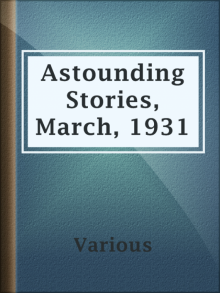 Astounding Stories, March, 1931
Astounding Stories, March, 1931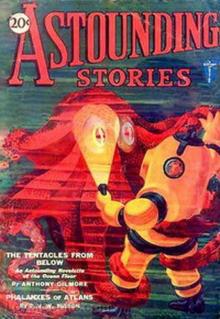 Astounding Stories, February, 1931
Astounding Stories, February, 1931 Futuria Fantasia, Spring 1940
Futuria Fantasia, Spring 1940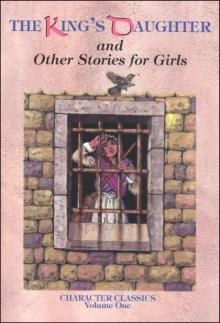 The King's Daughter and Other Stories for Girls
The King's Daughter and Other Stories for Girls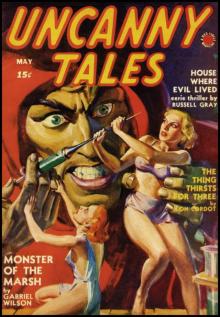 Uncanny Tales
Uncanny Tales Masters of Noir: Volume Two
Masters of Noir: Volume Two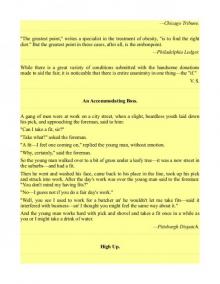 Witty Pieces by Witty People
Witty Pieces by Witty People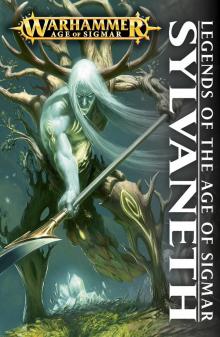 Sylvaneth
Sylvaneth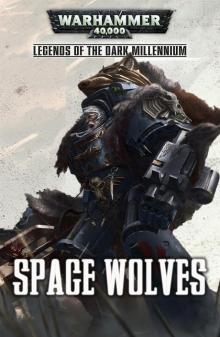 Space Wolves
Space Wolves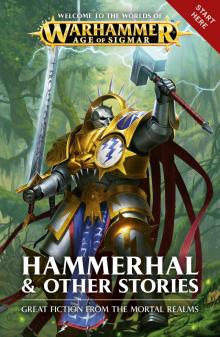 Hammerhal & Other Stories
Hammerhal & Other Stories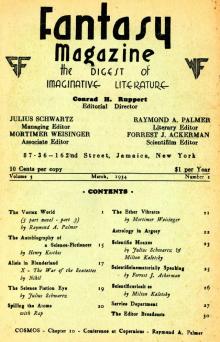 The Fantasy Fan, March, 1934
The Fantasy Fan, March, 1934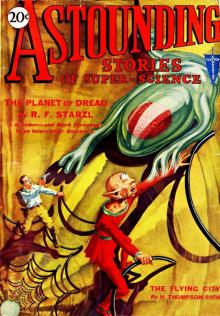 Astounding Stories of Super-Science, August 1930
Astounding Stories of Super-Science, August 1930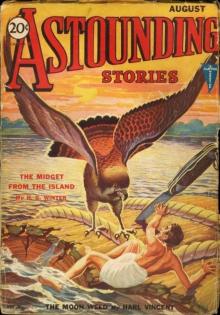 Astounding Stories, August, 1931
Astounding Stories, August, 1931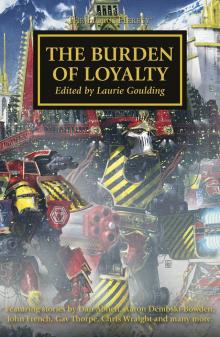 The Burden of Loyalty
The Burden of Loyalty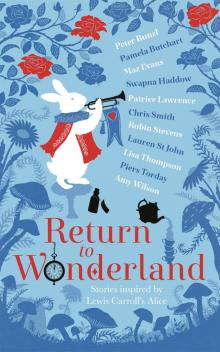 Return to Wonderland
Return to Wonderland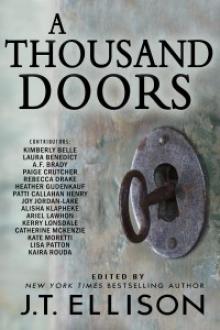 Anthology - A Thousand Doors
Anthology - A Thousand Doors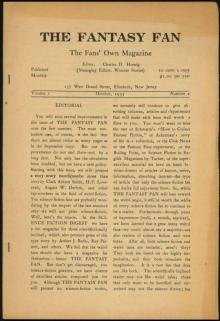 The Fantasy Fan, October 1933
The Fantasy Fan, October 1933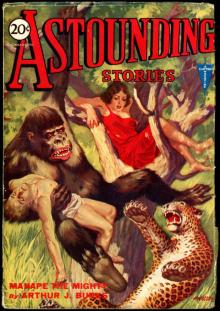 Astounding Stories, June, 1931
Astounding Stories, June, 1931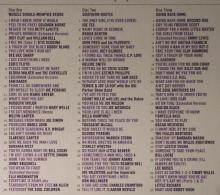 Southern Stories
Southern Stories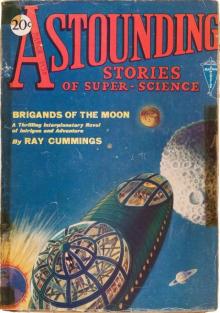 Astounding Stories of Super-Science, May, 1930
Astounding Stories of Super-Science, May, 1930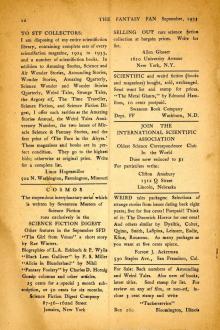 The Fantasy Fan December 1933
The Fantasy Fan December 1933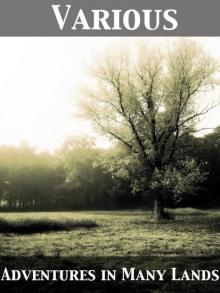 Adventures in Many Lands
Adventures in Many Lands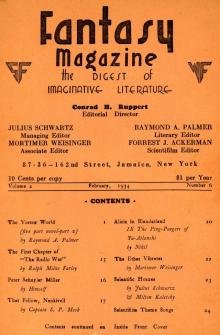 The Fantasy Fan February 1934
The Fantasy Fan February 1934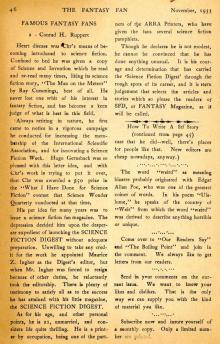 The Fantasy Fan November 1933
The Fantasy Fan November 1933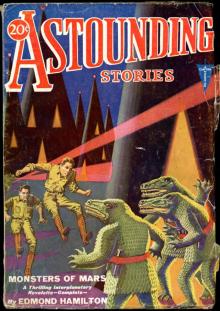 Astounding Stories, April, 1931
Astounding Stories, April, 1931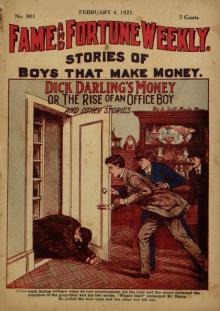 Fame and Fortune Weekly, No. 801, February 4, 1921
Fame and Fortune Weekly, No. 801, February 4, 1921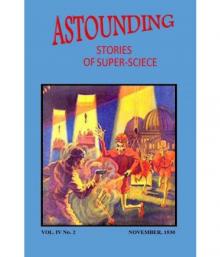 Astounding Stories of Super-Science, November, 1930
Astounding Stories of Super-Science, November, 1930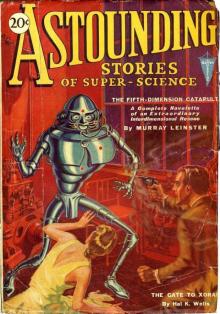 Astounding Stories of Super-Science January 1931
Astounding Stories of Super-Science January 1931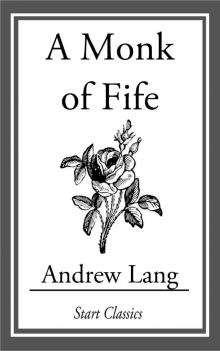 A Monk of Fife
A Monk of Fife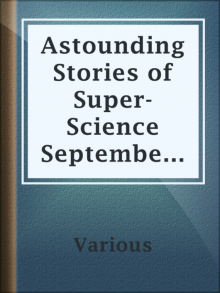 Astounding Stories of Super-Science September 1930
Astounding Stories of Super-Science September 1930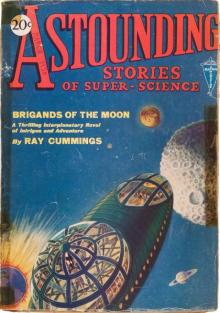 Astounding Stories of Super-Science July 1930
Astounding Stories of Super-Science July 1930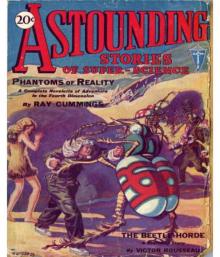 Astounding Stories of Super-Science, June, 1930
Astounding Stories of Super-Science, June, 1930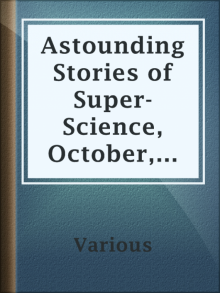 Astounding Stories of Super-Science, October, 1930
Astounding Stories of Super-Science, October, 1930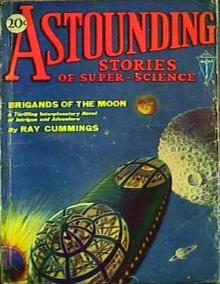 Astounding Stories of Super-Science, March 1930
Astounding Stories of Super-Science, March 1930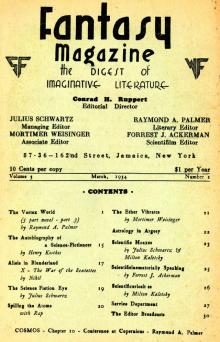 The Fantasy Fan January 1934
The Fantasy Fan January 1934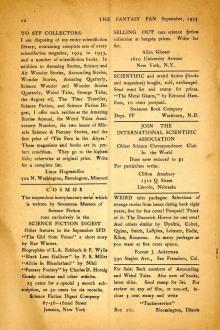 The Fantasy Fan September 1933
The Fantasy Fan September 1933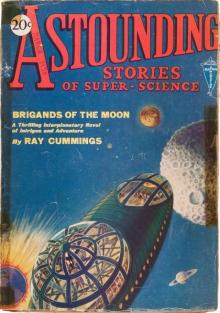 Astounding Stories of Super-Science February 1930
Astounding Stories of Super-Science February 1930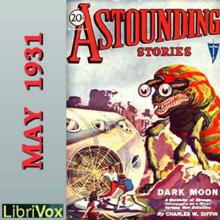 Astounding Stories, May, 1931
Astounding Stories, May, 1931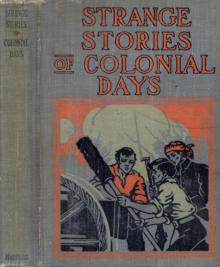 Strange Stories of Colonial Days
Strange Stories of Colonial Days Golden Age of Science Fiction Vol IX
Golden Age of Science Fiction Vol IX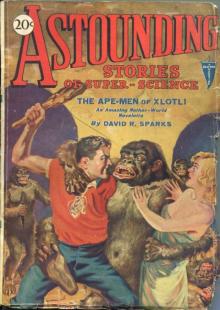 Astounding Stories of Super-Science, December 1930
Astounding Stories of Super-Science, December 1930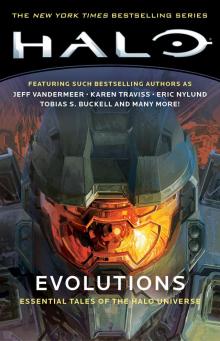 Evolutions: Essential Tales of the Halo Universe
Evolutions: Essential Tales of the Halo Universe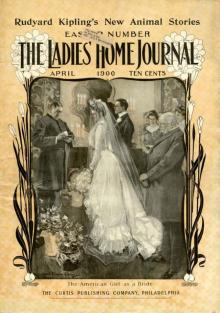 Good Stories Reprinted from the Ladies' Home Journal of Philadelphia
Good Stories Reprinted from the Ladies' Home Journal of Philadelphia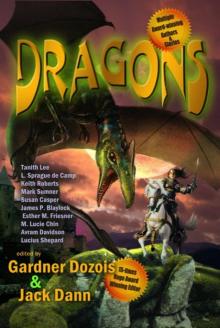 Dragons!
Dragons!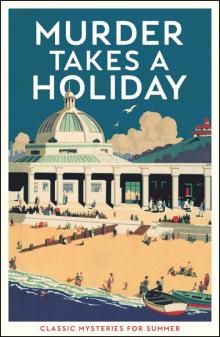 Murder Takes a Holiday
Murder Takes a Holiday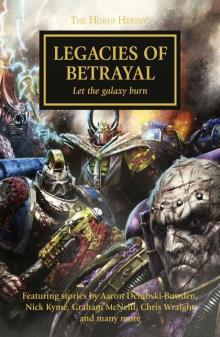 Legacies of Betrayal
Legacies of Betrayal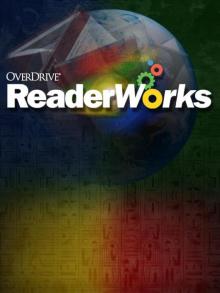 STAR WARS: TALES FROM THE CLONE WARS
STAR WARS: TALES FROM THE CLONE WARS Strange New Worlds 2016
Strange New Worlds 2016 Lippincott's Magazine, August, 1885
Lippincott's Magazine, August, 1885 Golden Age of Science Fiction Vol X
Golden Age of Science Fiction Vol X Hot Stuff
Hot Stuff Santa Wore Spurs
Santa Wore Spurs Paranormal Erotica
Paranormal Erotica Tangled Hearts: A Menage Collection
Tangled Hearts: A Menage Collection Sweet Tea and Jesus Shoes
Sweet Tea and Jesus Shoes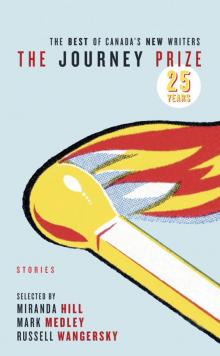 The Journey Prize Stories 25
The Journey Prize Stories 25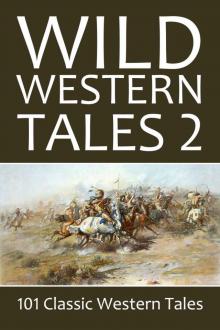 Wild Western Tales 2: 101 Classic Western Stories Vol. 2 (Civitas Library Classics)
Wild Western Tales 2: 101 Classic Western Stories Vol. 2 (Civitas Library Classics) (5/15) The Golden Age of Science Fiction Volume V: An Anthology of 50 Short Stories
(5/15) The Golden Age of Science Fiction Volume V: An Anthology of 50 Short Stories (4/15) The Golden Age of Science Fiction Volume IV: An Anthology of 50 Short Stories
(4/15) The Golden Age of Science Fiction Volume IV: An Anthology of 50 Short Stories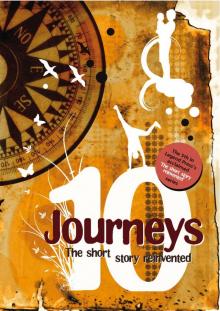 Ten Journeys
Ten Journeys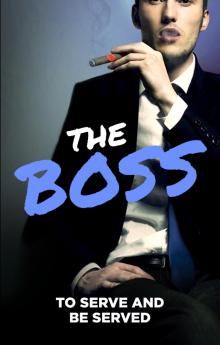 The Boss
The Boss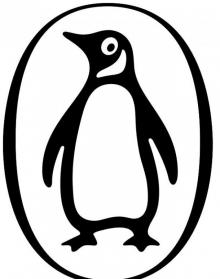 The Penguin Book of French Poetry
The Penguin Book of French Poetry Golden Age of Science Fiction Vol VIII
Golden Age of Science Fiction Vol VIII His Cinderella Housekeeper 3-in-1
His Cinderella Housekeeper 3-in-1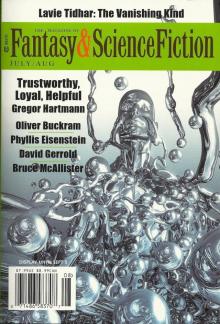 The Magazine of Fantasy & Science Fiction - July/August 2016
The Magazine of Fantasy & Science Fiction - July/August 2016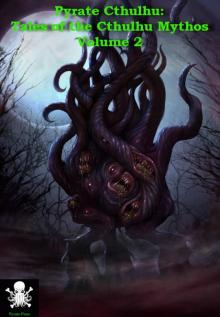 PYRATE CTHULHU - Tales of the Cthulhu Mythos (vol.2)
PYRATE CTHULHU - Tales of the Cthulhu Mythos (vol.2)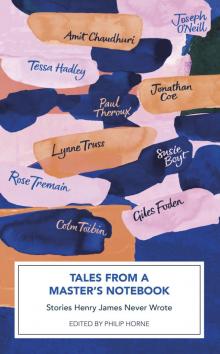 Tales from a Master's Notebook
Tales from a Master's Notebook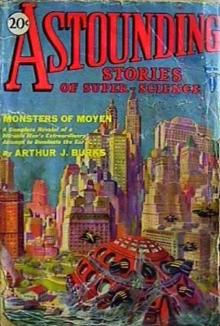 April 1930
April 1930 New Erotica 6
New Erotica 6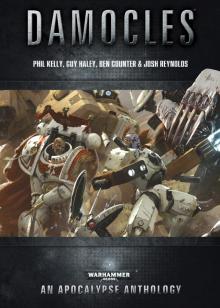 Damocles
Damocles The Longest Night Vol. 1
The Longest Night Vol. 1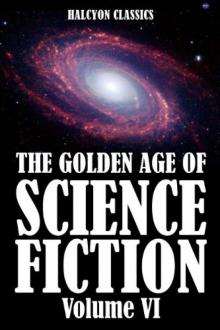 The Golden Age of Science Fiction Volume VI: An Anthology of 50 Short Stories
The Golden Age of Science Fiction Volume VI: An Anthology of 50 Short Stories (1/15) The Golden Age of Science Fiction: An Anthology of 50 Short Stories
(1/15) The Golden Age of Science Fiction: An Anthology of 50 Short Stories Eye of Terra
Eye of Terra ONCE UPON A REGENCY CHRISTMAS
ONCE UPON A REGENCY CHRISTMAS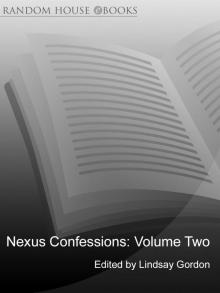 Nexus Confessions
Nexus Confessions Passionate Kisses
Passionate Kisses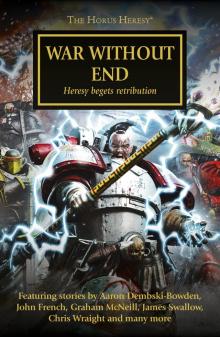 War Without End
War Without End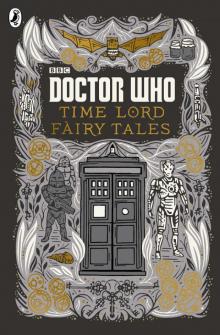 Doctor Who: Time Lord Fairy Tales
Doctor Who: Time Lord Fairy Tales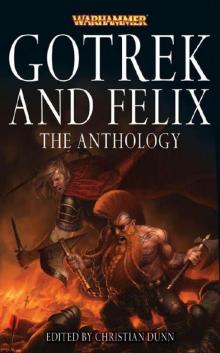 Gotrek and Felix: The Anthology
Gotrek and Felix: The Anthology WESTERN CHRISTMAS PROPOSALS
WESTERN CHRISTMAS PROPOSALS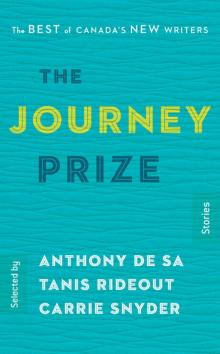 The Journey Prize Stories 27
The Journey Prize Stories 27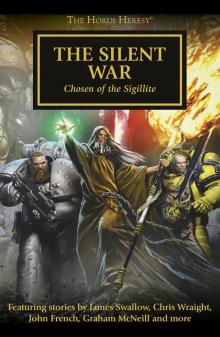 The Silent War
The Silent War Liaisons
Liaisons Ellora's Cavemen: Tales from the Temple IV
Ellora's Cavemen: Tales from the Temple IV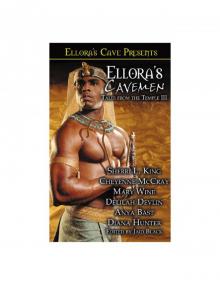 Ellora's Cavemen: Tales from the Temple II
Ellora's Cavemen: Tales from the Temple II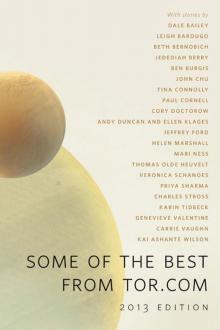 Some of the Best From Tor.com, 2013 Edition: A Tor.Com Original
Some of the Best From Tor.com, 2013 Edition: A Tor.Com Original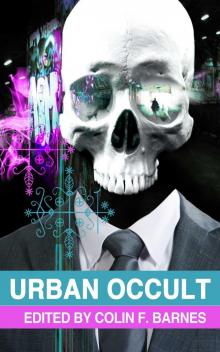 Urban Occult
Urban Occult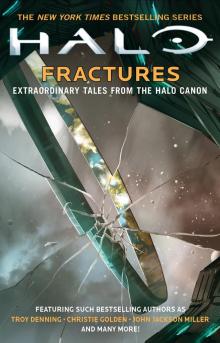 Fractures
Fractures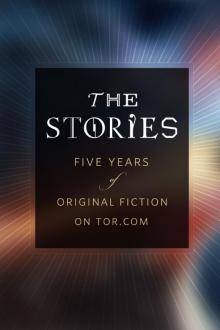 The Stories: Five Years of Original Fiction on Tor.com
The Stories: Five Years of Original Fiction on Tor.com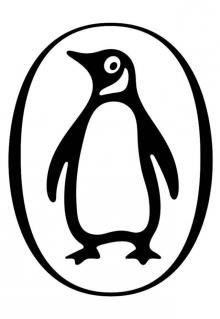 The Penguin Book of Modern British Short Stories
The Penguin Book of Modern British Short Stories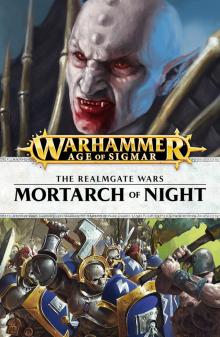 Mortarch of Night
Mortarch of Night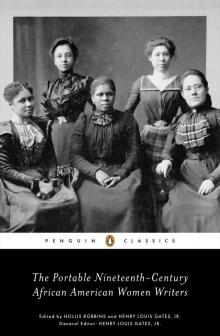 The Portable Nineteenth-Century African American Women Writers
The Portable Nineteenth-Century African American Women Writers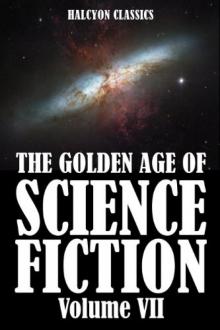 The Golden Age of Science Fiction Volume VII: An Anthology of 50 Short Stories
The Golden Age of Science Fiction Volume VII: An Anthology of 50 Short Stories Holy Bible: King James Version, The
Holy Bible: King James Version, The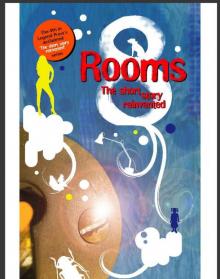 Eight Rooms
Eight Rooms sanguineangels
sanguineangels DarkNightsWithaBillionaireBundle
DarkNightsWithaBillionaireBundle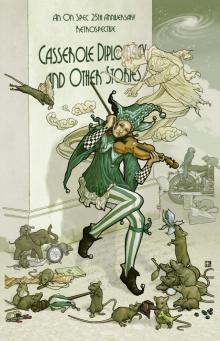 Casserole Diplomacy and Other Stories
Casserole Diplomacy and Other Stories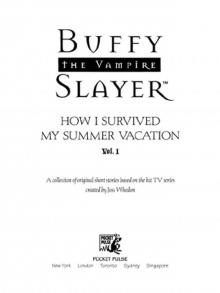 How I Survived My Summer Vacation
How I Survived My Summer Vacation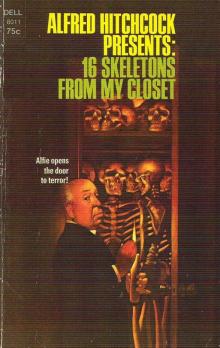 Alfred Hitchcock Presents: 16 Skeletons From My Closet
Alfred Hitchcock Presents: 16 Skeletons From My Closet Lords, Ladies, Butlers and Maids
Lords, Ladies, Butlers and Maids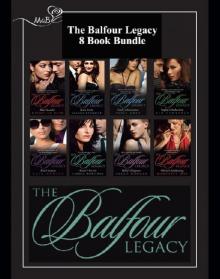 The B4 Leg
The B4 Leg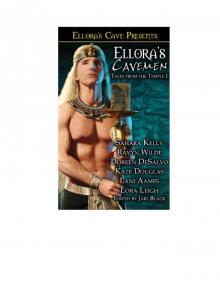 Ellora's Cavemen: Tales from the Temple I
Ellora's Cavemen: Tales from the Temple I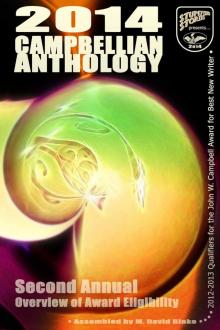 2014 Campbellian Anthology
2014 Campbellian Anthology There Is Only War
There Is Only War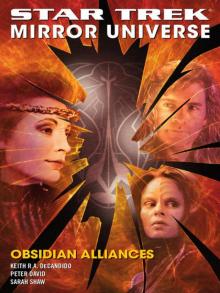 Obsidian Alliances
Obsidian Alliances 12 Gifts for Christmas
12 Gifts for Christmas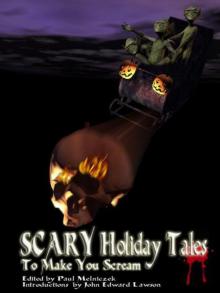 Scary Holiday Tales to Make You Scream
Scary Holiday Tales to Make You Scream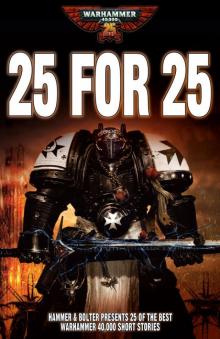 25 For 25
25 For 25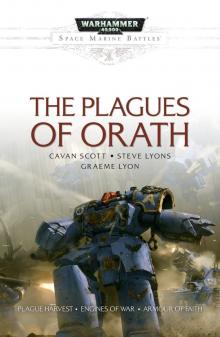 The Plagues of Orath
The Plagues of Orath And Then He Kissed Me
And Then He Kissed Me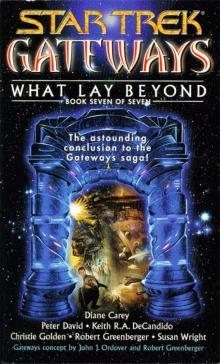 Star Trek - Gateways 7 - WHAT LAY BEYOND
Star Trek - Gateways 7 - WHAT LAY BEYOND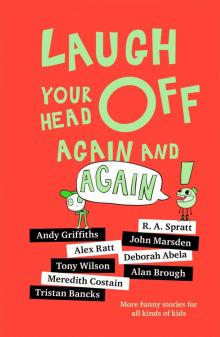 Laugh Your Head Off Again and Again
Laugh Your Head Off Again and Again The Balfour Legacy
The Balfour Legacy Golden Age of Science Fiction Vol XI
Golden Age of Science Fiction Vol XI (3/15) The Golden Age of Science Fiction Volume III: An Anthology of 50 Short Stories
(3/15) The Golden Age of Science Fiction Volume III: An Anthology of 50 Short Stories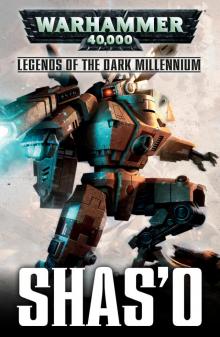 Shas'o
Shas'o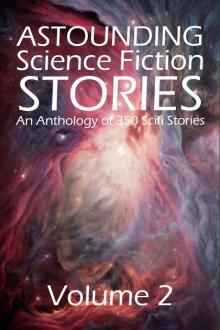 Astounding Science Fiction Stories: An Anthology of 350 Scifi Stories Volume 2 (Halcyon Classics)
Astounding Science Fiction Stories: An Anthology of 350 Scifi Stories Volume 2 (Halcyon Classics)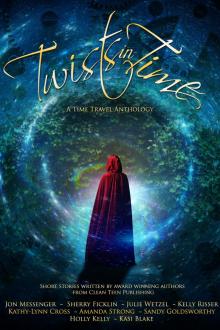 Twists in Time
Twists in Time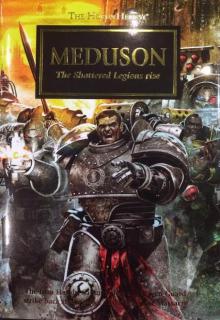 Meduson
Meduson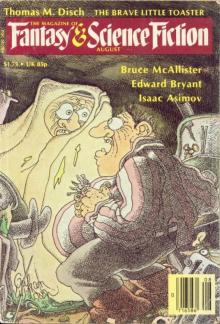 The Magazine of Fantasy & Science Fiction - August 1980
The Magazine of Fantasy & Science Fiction - August 1980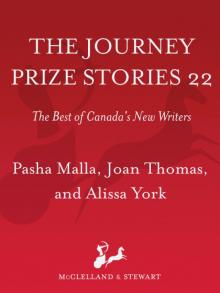 The Journey Prize Stories 22
The Journey Prize Stories 22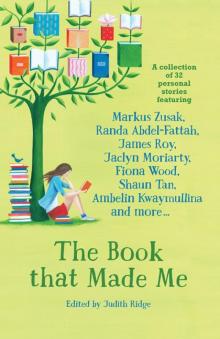 The Book that Made Me
The Book that Made Me Angels of Death Anthology
Angels of Death Anthology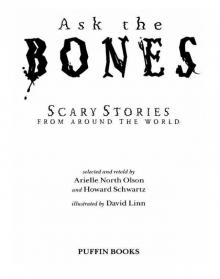 Ask the Bones
Ask the Bones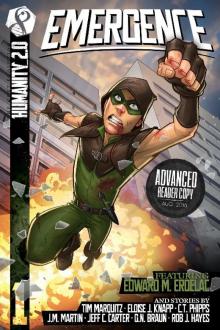 Emergence
Emergence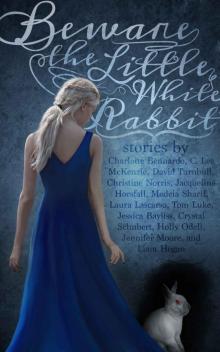 Beware the Little White Rabbit
Beware the Little White Rabbit Xcite Delights Book 1
Xcite Delights Book 1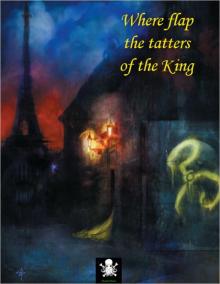 Where flap the tatters of the King
Where flap the tatters of the King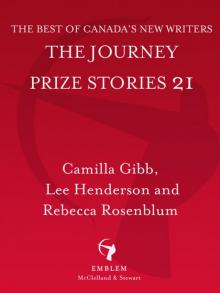 The Journey Prize Stories 21
The Journey Prize Stories 21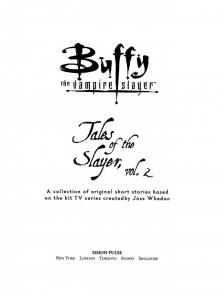 Tales of the Slayer, Volume II
Tales of the Slayer, Volume II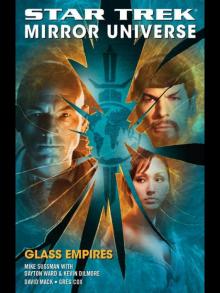 Glass Empires
Glass Empires Golden Age of Science Fiction Vol XII
Golden Age of Science Fiction Vol XII (2/15) The Golden Age of Science Fiction Volume II: An Anthology of 50 Short Stories
(2/15) The Golden Age of Science Fiction Volume II: An Anthology of 50 Short Stories Fairytale Collection
Fairytale Collection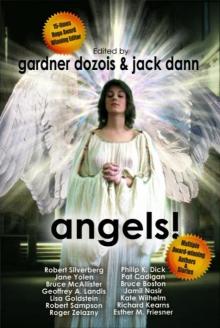 Angels!
Angels! Golden Age of Science Fiction Vol XIII
Golden Age of Science Fiction Vol XIII